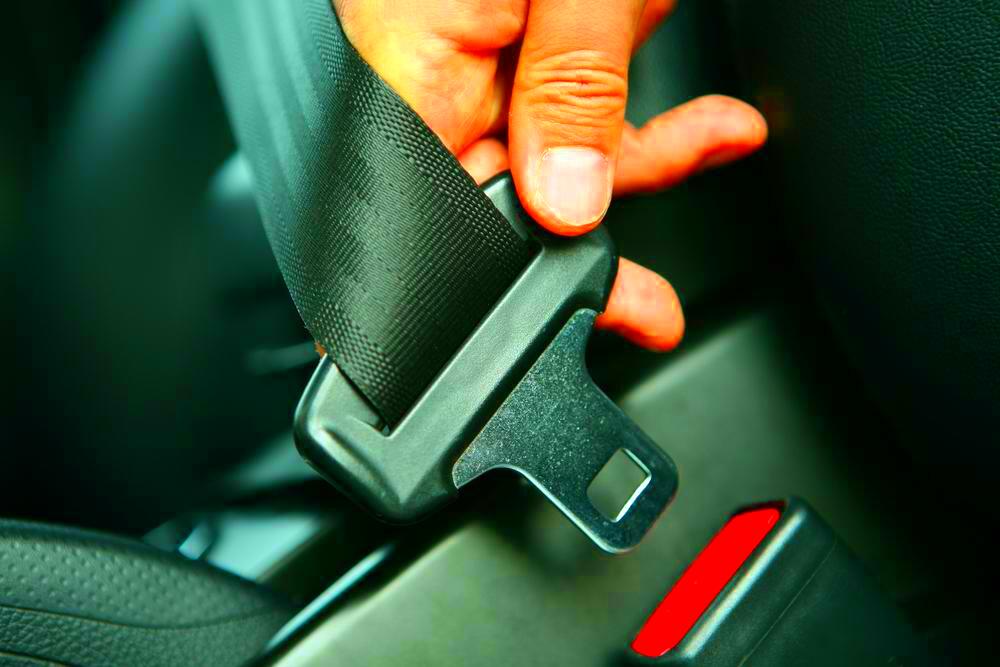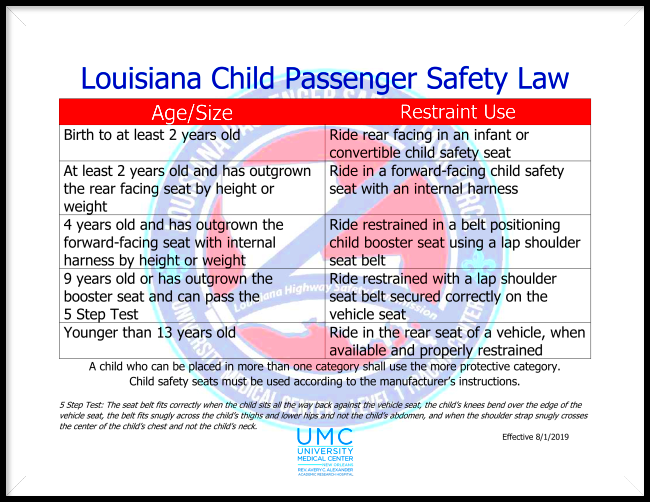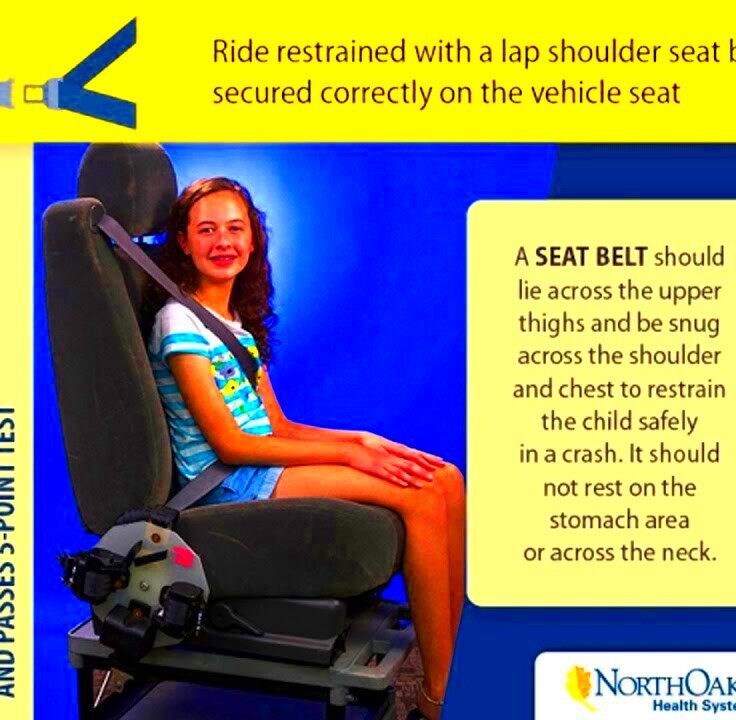Louisiana Seatbelt Laws for Kids: What You Need to Know
On the streets of Louisiana, child safety is paramount, and as such, laws have been put in place that dictate how children should be secured in vehicles. All parents and caregivers must know these laws. The knowledge will help protect young passengers as well as ensure conformity with state regulations. Knowing the rules helps you avoid penalties and keep your son/daughter safe at the same time.
Age and Weight Requirements for Seatbelt Use

In Louisiana, there are distinct laws regarding children who must be restrained in seatbelts or car seats based on their ages and weights. Here is a summary:
- Children under 1 year: Must be secured in a rear-facing car seat.
- Children aged 1 to 4 years: Should be in a forward-facing car seat with a harness.
- Children aged 4 to 9 years: Must use a booster seat until they reach a height of 4 feet 9 inches.
- Children over 9 years: Can use a regular seatbelt, provided it fits properly.
To be certain that the seat or restraint used by your child is suitable for his/her size and adheres to safety regulations, it is necessary to check them frequently enough. It can help save the life of a kid during rides considerably when the devices are routinely replaced depending on how big he/she becomes.
Types of Child Restraints Available

Choosing which child restraint system is best for maintaining safety when transporting children is extremely important; thus their selection must not be taken lightly. The following are some examples:
| Type of Restraint | Age/Weight Range | Description |
|---|---|---|
| Rear-Facing Car Seat | Birth to 1 year (or until they exceed the seat’s weight limit) | Designed to protect infants by cradling their head and neck in a crash. |
| Forward-Facing Car Seat | 1 to 4 years | Utilizes a harness to secure the child, providing added protection in a crash. |
| Booster Seat | 4 to 9 years (or until they reach 4 feet 9 inches) | Elevates the child so the seatbelt fits properly across their chest and lap. |
| Seatbelt | 9 years and older (or once they exceed booster seat requirements) | A regular seatbelt that fits snugly across the child’s body. |
Selecting an appropriate car seat according to your kid’s age and weight is extremely important. Installation and usage always require following manufacturer’s guidelines. Keeping in mind your child’s safety when driving helps avoid serious accident related injuries.
Penalties for Non-Compliance with Seatbelt Laws
It’s clearly vexatious if someone says they never knew not following seatbelt laws could get them punished. The seatbelt laws are aimed at keeping children safe from harm, and breaking them would only invite serious ramifications. All individuals responsible for taking care of young ones must have this knowledge in order to evade the fines as well as keeping their children safe at the same time.
Here is what you could anticipate if you are caught not using a child restraint or not fastening a seatbelt around a minor:
- Fines: Failing to secure your child can result in fines ranging from $100 to $500, depending on the specific violation.
- Points on License: Depending on the offense, points may be added to your driving record, which can lead to increased insurance rates.
- Court Appearance: In some cases, you may be required to appear in court, adding to the inconvenience.
- Increased Insurance Costs: Traffic violations can lead to higher premiums with your auto insurance provider.
Always be cautious not to regret it later. In addition to protecting your kids, using suitable restraints is an effective way of evading penalties. To ensure that you and yours stay safe while driving, it is important to frequently refresh your understanding of the laws.
Importance of Properly Securing Children in Vehicles
While every parent has an idea that it is important for children to be strapped into cars, the reasons as to why this is case are deeper than merely obeying laws. Properly securing children would greatly minimize chances of getting injured or dying in case an accident occurs. Knowing why it’s so important may help to inspire guardians to always practice safety measures.
Henceforth, let us have a look at the various explanations why underlining the need to protect your child is significant:
- Injury Prevention: Proper restraints significantly lower the chances of severe injuries during a crash.
- Compliance with the Law: Following the laws helps avoid fines and legal trouble.
- Setting an Example: Children learn by observing. Properly securing them teaches them the importance of safety.
- Peace of Mind: Knowing your child is safely secured allows you to focus on driving without distractions.
Establishing a routine to verify and secure your child prior to every journey can prevent fatalities. A straightforward measure that tremendously contributes to their safety and health can go far ahead in life.
Exemptions and Special Cases in Louisiana
In regards to seatbelt laws in Louisiana there are some exemptions and special circumstances that the parents should know. By understanding these exceptions, it will be possible for you to better navigate these laws while at the same time keeping your child safe.
The following are notable instances and exceptions:
- Medical Exemptions: Children with medical conditions that prevent them from using standard restraints may be exempt. A physician’s note may be required.
- Taxi and Rideshare Services: Children traveling in taxis or rideshare vehicles are not required to use car seats or booster seats, but it is strongly recommended for safety.
- Rural Exceptions: Some rural areas may have different enforcement levels, but it’s best to follow state guidelines regardless of location.
- Vehicles Not Equipped with Seatbelts: If a vehicle lacks seatbelts, passengers must use other available safety measures, though this is rare in modern cars.
Even though they’re there, but in everything else remember prioritize your child’s safety. In doubt concerning legality or specific instances; it is good to ask local government or security organizations. Staying informed may protect your child from dangers encountered while driving.
Safety Tips for Parents and Caregivers
Keeping children safe while travelling in vehicles is one of the most important things for a parent or caregiver. While following the seatbelt laws alone are not enough, here are some other safety tips to consider. Such practices will not only help in ensuring the safety of kids but also instill an attitude towards safety which they will live with throughout their life.
Following are some useful safety tips that can help you stay unhurt:
- Always Check the Fit: Ensure that the seatbelt fits snugly across the child’s shoulder and lap. If the seatbelt does not fit properly, consider using a booster seat.
- Install Car Seats Correctly: Follow the manufacturer’s instructions for installing car seats and booster seats. If you’re unsure, many local fire departments or police stations offer free car seat checks.
- Use the Back Seat: For children under 13, it’s safest for them to ride in the back seat, away from airbags.
- Teach Safety Habits: Explain to children why they need to wear seatbelts. Teaching them the importance of safety can instill good habits from a young age.
- Inspect Regularly: Regularly check the condition of car seats and seatbelts. Ensure they are not damaged or expired.
Including these suggestions in your day-to-day life can result into an environment that is kid-friendly as well as encouraging responsible driving habits.
Frequently Asked Questions about Seatbelt Laws for Kids
There are several inquiries from parents regarding the key characteristics of seatbelt regulations for children. The following are a few commonly asked questions that may help to make sense of this crucial matter:
- What are the penalties for not using a child restraint?
Fines can range from $100 to $500, depending on the violation. Points may also be added to your driving record. - When can my child stop using a booster seat?
Children can transition out of a booster seat once they reach 4 feet 9 inches in height or are over 9 years old. - Are there exceptions to the seatbelt laws?
Yes, medical exemptions exist, and children in taxis or rideshare services are not required to use booster seats, though it is advisable. - What if my car doesn’t have seatbelts?
While this is rare in modern cars, if a vehicle lacks seatbelts, other safety measures should be taken. - How can I ensure my child is safe during long trips?
Make regular stops, provide snacks, and encourage breaks to stretch. Ensure the child is properly secured before each leg of the trip.
The safety measures that parents ought to take into account when considering the welfare of their children can be better understood through these FAQs which address typical worries.
Conclusion on the Importance of Following Seatbelt Laws
Louisiana’s seatbelt laws aren’t only legal, but also essential for ensuring children’s safety in cars. Statistically speaking, keeping children properly restrained during car journeys may save their lives while lowering the severity of their injuries when involved in an accident. When it comes to children’s safety on the roadways, parents/caretakers have a crucial role as far as being acquainted with seatbelt laws and practices that would make them safer for their charge.
It is not only about obeying the law; it is about safeguarding your family. For this reason, periodic updates on statutory regulations; make sure your child is correctly strapped on car seats or other similar restraining devices and always show good examples regarding all these. A good beginning to safety starts with yourself and by teaching your children these habits you are enabling them to have sufficient information that will help them in staying secure on the highways. Thus, wear seat belts and make safety a priority whenever you go out driving!


